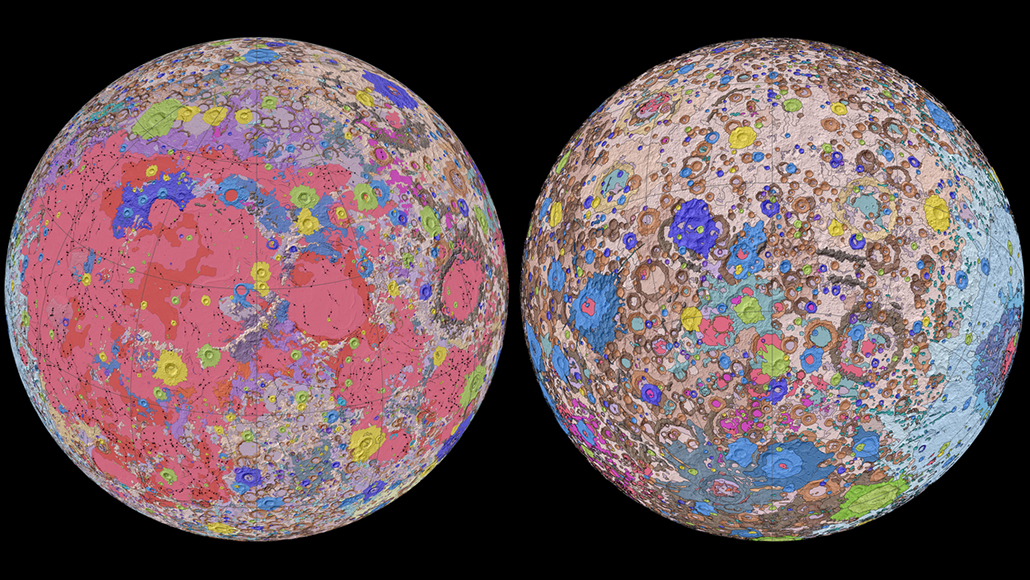This is the most comprehensive map of the moon’s geology yet
Cartographers merged Apollo-era maps and modern lunar observations to make the new graphic

A new map of the moon is the most comprehensive geologic map of the lunar surface (nearside shown left, farside shown right). Different colors designate different surface features, such as lunar highlands (dark earth tones) and ancient lava flows (reds and purples).
GSFC/NASA, USGS







